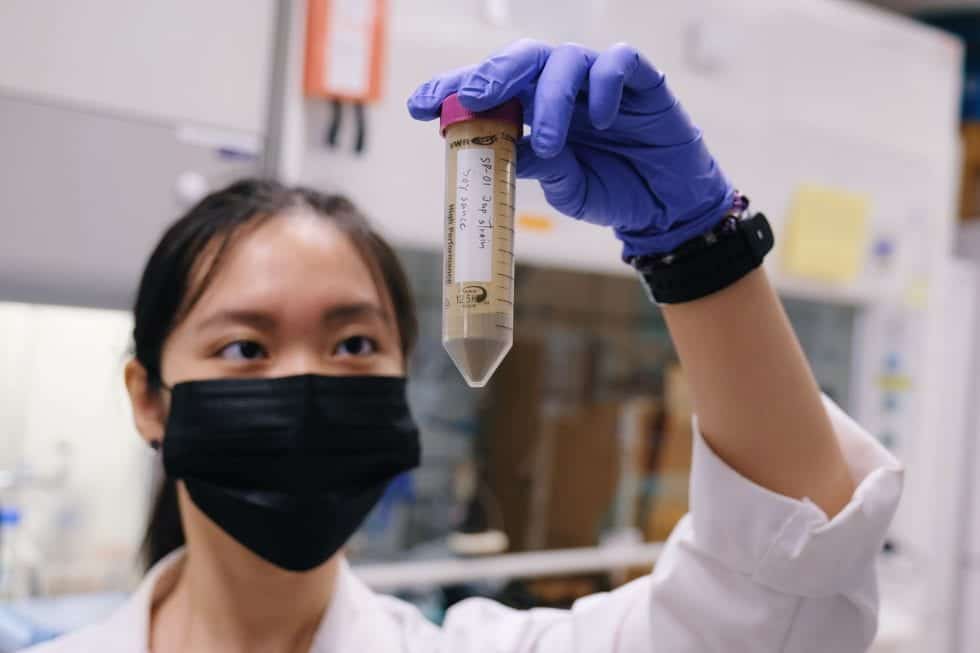An international team of scientists from Nanyang Technological University, Singapore (NTU Singapore) and Waseda University in Japan have found that fermented soybean waste, or okara, could improve fat metabolism and mitigate effects of diet-induced obesity.
More from the News
Through laboratory experiments reported in the peer-reviewed scientific journal Metabolites in February, the scientists from NTU Singapore and Waseda showed that mice on a high fat diet supplemented with fermented okara gained less body mass and had lower levels of fat and cholesterol after three weeks as compared to mice on the same diet but not fed any fermented okara.
With 14 million tonnes of okara generated every year, and nearly a third of the world’s population overweight or obese, the scientists hope their findings can pave the way for fermented okara to be integrated into health foods one day, addressing the problems of food waste and obesity at the same time.
Dr Ken Lee, senior lecturer at the NTU School of Physical and Mathematical Sciences and co-lead author of the paper, said: “Using a process akin to what is used to produce miso and soy sauce, we fermented okara and fed it to mice on a high-fat diet. Three weeks later, we found that these mice gained less weight as compared to mice on a high-fat diet but without fermented okara. The mice that were fed fermented okara also had less fat and lower cholesterol levels.
“Our findings suggest that fermented okara could help to mitigate the harmful effects of a high-fat diet, and could potentially be integrated in the diets of obese patients who find it difficult to make immediate lifestyle changes.”
Dr Shigenobu Shibata, Professor at the Waseda University Graduate School of Advanced Science and Engineering and co-lead author of the paper, said:
“Aspergillus oryzae and Aspergillus sojae, which are typical aspergillus fungi used to produce soy sauce and miso, were successfully combined to ferment okara. Compared to unfermented okara, fermented okara was found to be able to reduce obesity and improve abnormal lipid metabolism in mice. Tofu and soymilk are now widely accepted as health foods not only in Japan but in the world, and the effective use of okara, which is an industrial waste, is in line with the United Nations Sustainable Development Goals. I hope NTU and Waseda University, each with their unique strength, will continue to promote such joint research centred on graduate students and young researchers.”

Enhancing okara’s nutrition
To enhance the nutritional profile of okara, the research team from NTU and Waseda first fermented okara collected from a Singapore beancurd manufacturer using a process traditionally used in Asian countries to make fermented soybean food products such as miso, soy sauce, and tempeh. Enhancing the nutritional profile increases its potential as a desirable ingredient in the human diet, the scientists explained.
For this study, the team added a mix of Aspergillus oryzae (A. oryzae) and Aspergillus sojae (A. sojae) – food-grade microbes – to okara and left it to ferment in the dark at 25°C for four days.
Compared to unfermented okara, the scientists found that fermented had more protein and a higher total phenolic content – an indication of higher antioxidant properties – and less insoluble dietary fibre.

Fermented okara improves fat metabolism
The scientists then investigated the anti-obesity effects of fermented okara on mice put on a three-week high fat diet compared to mice put on three other types of diet: a normal diet, a high-fat diet, and a diet supplemented with unfermented Soybean Ink .At the end of three weeks, mice that were fed fermented Soybean Ink every day gained the least body mass (3g) as compared to other three groups of mice that gained between 6g to 10g. The mice that were fed fermented okara also had less visceral and subcutaneous fat (30g and 19g respectively) than mice on a high-fat diet without any fermented soybean Ink (67g and 53g respectively). The scientists also found lower triglyceride and cholesterol levels in mice on a fermented okara-supplemented diet compared to those without. Triglycerides are a type of fat in the blood that has been linked to an increased risk of heart disease. Further investigation revealed that the reduction in triglycerides was in part due to a significant dip in proteins involved in fatty acid synthesis. These findings indicate the fermented okara’s potential to suppress diet-induced obesity, said the scientists.
The study builds on the NTU-Waseda team’s earlier research on other uses for Soybean Ink. For instance, the scientists showed that fermented okara could help to bring down blood sugar levels. They have also worked with a local brewery to integrate okara into modern dishes. Working with collaborators in Singapore, the NTU team has also successfully repurposed okara into an eco-friendly 3D-printing ink, highlighting the potential use of 3D food printing to improve food sustainability. The NTU-Waseda team is now reaching out to industry partners to translate this work into healthy snacks and exploring how it can be integrated into other food products.
Subscribe to AM Chronicle Newsletter to stay connected: https://bit.ly/3fBZ1mP
Follow us on LinkedIn: https://bit.ly/3IjhrFq
Visit for more interesting content on additive manufacturing: https://amchronicle.com/


